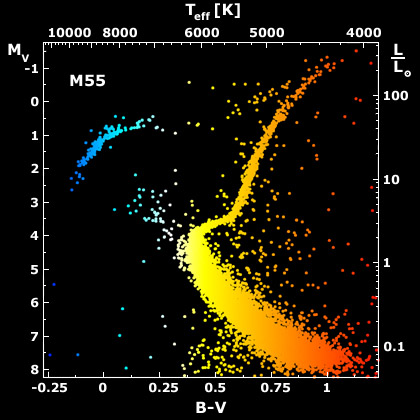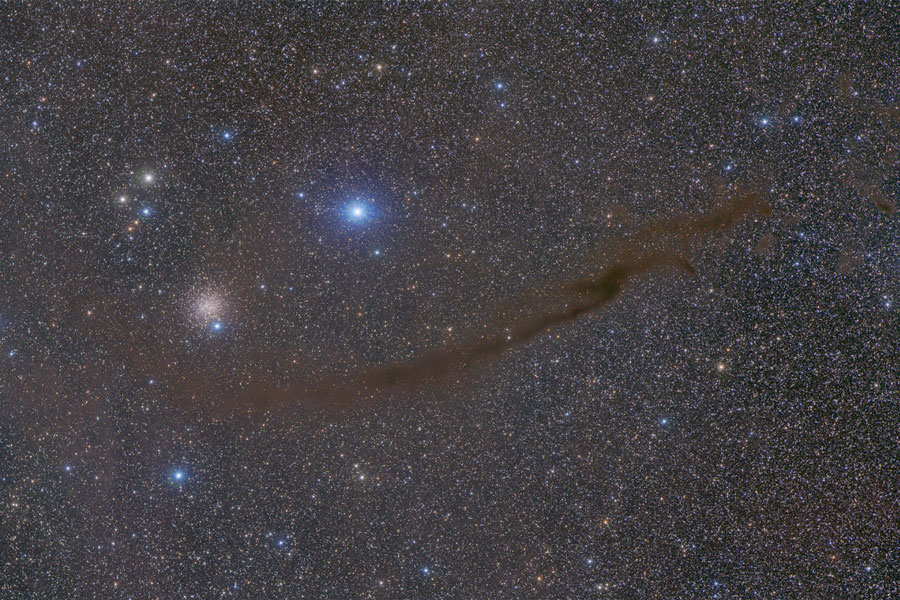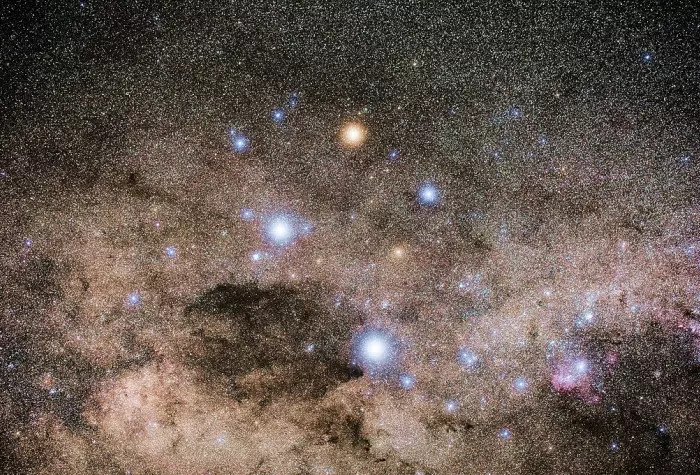Chris Peterson wrote: ↑Thu Sep 26, 2024 7:55 pm
Randall Rathbun wrote: ↑Thu Sep 26, 2024 7:29 pm
I would like to see a post on UV bright star Barnard 29 (not to be confused with a dark nebula of the same name) with some discussion on the unique place it has on the Hertzsprung-Russell diagram. Thanks. How was this star found in the first place? Did someone have UV film and the star was ultra-bright?
I doubt the UV is detectable from the ground. The star appears very blue, and by measuring its intensity at two or more wavelengths the shape of the blackbody can be inferred, and therefore the temperature. At something like 21,000 K, the peak output will be around 140 nm, in the UV... even if that can't be measured directly through the atmosphere.
How did the two of you, Randall and Chris, find out about this star? I asked Simbad Astronomical database about Barnard 29, and all it would give me was the dark cloud. The only source I could find that would talk about this star at all was
messier.seds.org., and it gave me the designation NGC 6205 222, which was accepted by Simbad. (Simbad itself called the star 2MASS J16413368+3626077, which is a mouthful.)
Unfortunately, Simbad has no information on the U magnitude of this star. It does tell us that the B magnitude of the star is 12.98, the V magnitude is 13.14, and the J, K and H magnitudes are progressively (but slowly) fainter. According to Simbad, the spectral class of this star is B2p D ~. I don't know what D ~ means, but B2p should mean that the star is spectral class B2, but peculiar. Of course, since it is a post-AGB star, it will indeed be peculiar compared to stars of spectral class B2 that are supporting themselves through fusion.
My point, however, is that this star is spectral class B2 and not O. A main sequence star of spectral class B2 will have a temperature of ~21,000 K, according to
University of Northern Iowa. Some central stars of planetary nebulas are known to be much, much hotter. And yes, I know that you know that. And all that it really means is that the star is in the process of removing its outer layers, but it has most certainly not finished that process or cast off all of its outer atmosphere.
The Gaia parallax of this star is 0.0775 ± 0.0298 milliarcseconds. A parallax of 0.0775 mas corresponds to a distance of 12,900 parsecs or 42,000 light-years. That's too far away for M13, whose accepted distance is 22,000-25.000 light-years. If we use the uncertainty of the Gaia measurement to make the parallax as large as possible, we get a parallax of 0.1073, corresponding to a distance of about 30,000 light-years, which still seems a bit far away. Using that distance, however, and the star's B and V magnitudes, gives an absolute B magnitude of some 440 solar luminosities and a V magnitude of some 380 solar luminosities. That sounds reasonable for a star of spectral class B2.
I tried to find a reasonably good color photo of a star of spectral class B2, to show it here as a proxy for Barnard 29. Well, you wouldn't believe how hard it was to find a star of spectral class B2 that is well-known enough to have had its portrait taken. Finally I found Alpha Musca, which gets photographed only because it is located next to the Dark Doodad.
Edit: Oh no!!! I showed you a picture not of B2-type alpha Musca, but of B5-type gamma Musca!!!


All right, but here you can really see (at left) both alpha and beta Musca, which are both spectral class B2:
Full size of the image is here:
https://apod.nasa.gov/apod/image/2303/D ... 24crop.jpg
Still, I have to ask, how did you, Randall, hear of Barnard 29?
Ann
 The Great Globular Cluster in Hercules
The Great Globular Cluster in Hercules














